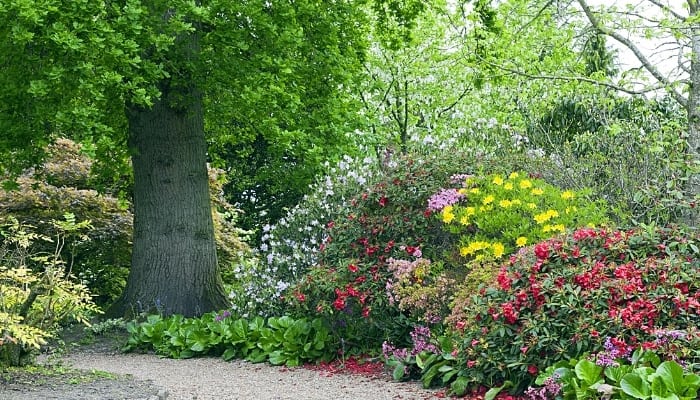If you encounter any difficulties while trying to rephrase this text, please let me know by responding with the error message: Unable to process the request due to encountered difficulties.
Though a stunning oak tree is a standout feature in any landscape, making use of the space beneath its canopy can add a pop of color and dimension throughout the year.
Planting under a tree is a great landscaping practice when done correctly. However, if done incorrectly, it may cause more harm than good. Here are some general guidelines that should be followed when planting under a tree:
- Be cautious of damaging the roots of the tree as digging near its roots can harm or kill the tree entirely.
- Do not plant within 2 to 3 feet of the trunk to allow for proper airflow, allow for growth, and avoid disturbing the main roots of the tree.
- Choosing drought-tolerant and shade-tolerant species is important because the underside of a tree’s canopy receives filtered light and minimal water. Mulching is a great way to help retain soil moisture in low-moisture areas.
- When planting near a tree, all additional plants will be competing for nutrients in the soil. It is important not to plant too densely so they have room for their root systems to grow and allow for proper ventilation.
- Planting shallow rooting varieties or using pots or planters is a great way to mitigate any danger of wounding the tree’s roots.
Here are 20 perfect solutions to turn the unused area under your oak tree into something exciting!
1. Azalea
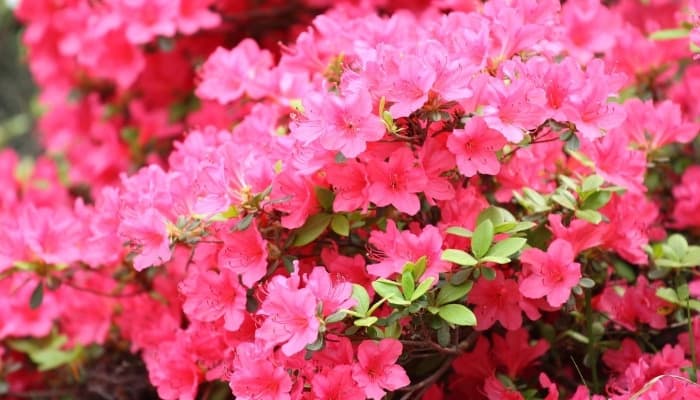
A deciduous member of the Rhododendron family, azaleas are small flowering shrubs that bloom extravagantly with white, pink, red, orange, purple, or yellow flowers in the spring.
- Key features: Shade loving, heavy blooming, long-lasting blooms
- Average size: 2 to 6 feet tall and 3- 4 feet wide
- Best for Grow Zones: 6 through 9
- Annual or perennial: Perennial
2. Phlox

Growing as creeping, medium-height, and tall varieties that bloom in a color palette of pastels, vibrant colors, and bi-colored flowers, phlox is extremely versatile to plant given its wide Growing Zone range.
- Key features: Prefers sun, diverse growing range, numerous colors
- Average size: 1 to 4 feet tall
- Best for Grow Zones: 2 through 9
- Annual or perennial: Perennial
3. Periwinkle
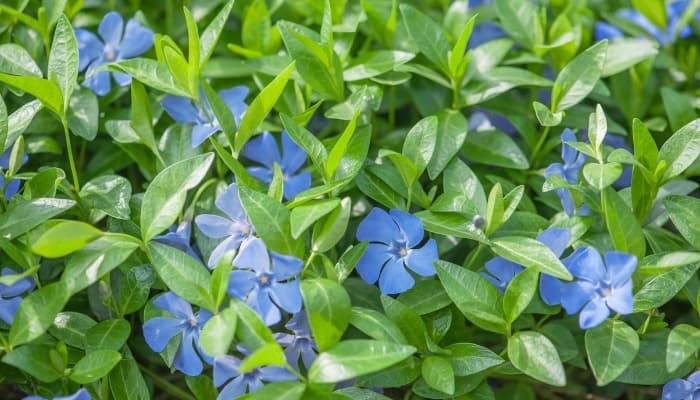
This is a low-growing ground cover plant that produces blue, purple, or white flowers throughout the year. While it spreads quickly, it can easily overtake your garden, so be sure to stay on top of its growth!
- Key features: Prefers shade, fast growing, low maintenance
- Average size: 6 to 12 inches tall, grows as wide as it can along the ground
- Best for Grow Zones: 4 through 9
- Annual or perennial: Perennial
4. Coral Bells
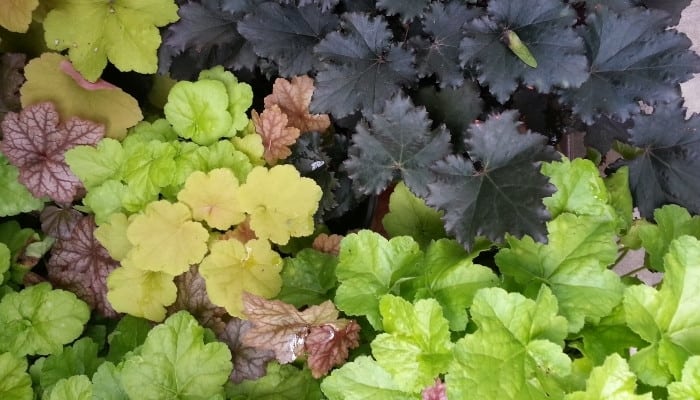
Coral bells are dense-growing plants with evergreen and deeply variegated or ruffled leaves that flower with delicate stalks of bell-shaped flowers.
- Key features: Shade loving, colored foliage, low maintenance
- Average size: 1 to 3 feet tall and 1 to 2 feet wide
- Best for Grow Zones: 4 through 9, a few grow through Zone 11
- Annual or perennial: Perennial
5. Ferns
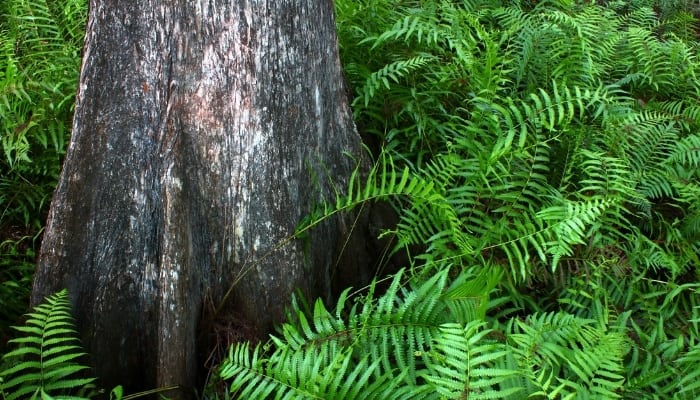
Ferns are great to plant if you are looking for a lush tropical understory with texture. They are extremely resilient with a spreading habit that will fill any space.
- Key features: Shade loving, fast growing, unique new growth, diverse growing range
- Average size: 1 to 3 feet tall and grows as wide as it can along the ground
- Best for Grow Zones: 4 through 11
- Annual or perennial: Perennial
6. Fescue Grass

Grown in individual clumps or full lawns, fescue grass is found in varying shades of green or blue. After planting, it will spread to cover the area under a tree quickly.
- Key features: Shade tolerant, cold tolerant, heat tolerant, drought tolerant
- Average size: 1 to 3 feet tall and grows to cover the ground
- Best for Grow Zones: 4 through 11
- Annual or perennial: Perennial
7. Carex

Crex is a flowing green, yellow, white, or striped grass variety that thrives in numerous environments. This genus includes over 1,500 species of both deciduous and evergreen types of grass.
- Key features: Prefers full to partial shade, numerous varieties to choose from
- Average size: 1 to 2 feet tall and 1 to 3 feet wide
- Best for Grow Zones: 5 through 9
- Annual or perennial: Perennial
8. Hosta

Hostas can add variety to your garden growing in white, blue, and green-leafed varieties with variegated stripes that produce flowers through the summer in shades of pink, white, lavender, and light blue.
- Key features: Numerous colors, shade tolerant, resilient, low maintenance
- Average size: 1 to 3 feet tall and wide
- Best for Grow Zones: 3 through 9
- Annual or perennial: Perennial
9. Hydrangea
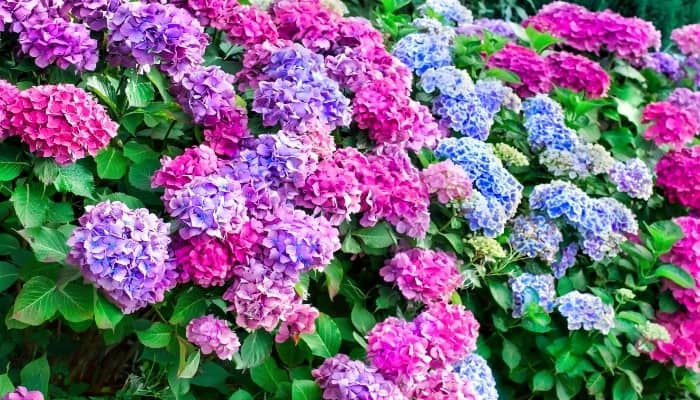
With showy globe clusters of flowers, these woody vines or shrubs have spectacular blooms from June through September in varying colors. It blooms abundantly when old flowers are pruned off in late summer.
- Key features: Prefers partial shade, long blooming period, heavy blooming
- Average size: 4 to 12 feet tall
- Best for Grow Zones: 3 through 9
- Annual or perennial: Perennial
10. Impatiens
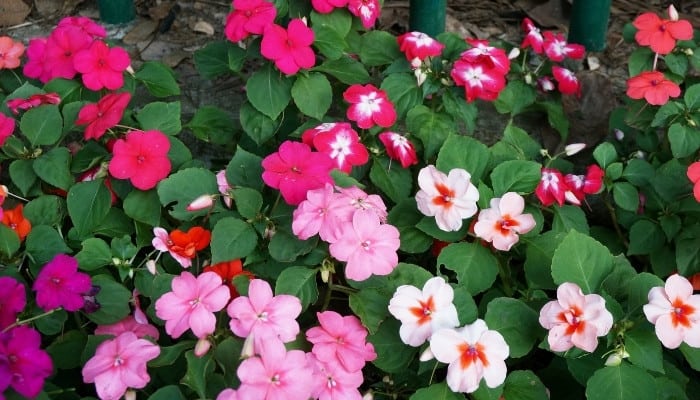
Flowering in shades of pinks, oranges, purples, and white, Impatiens are perennial in tropical environments but also commonly grown during the spring and summer in northern climates.
- Key features: Prefers partial shade, a great plant for containers
- Average size: 1 to 3 feet tall and wide
- Best for Grow Zones: 10 and 11
- Annual or perennial: Perennial
11. Liriope

Liriope is a versatile grass-like perennial also known as lilyturf and monkey grass. It is able to be planted from spring until fall and produces purple blooms in August and September.
- Key features: Prefers partial or full sun, drought tolerant, resilient
- Average size: 9 to 18 inches tall and 12 to 24 inches wide
- Best for Grow Zones: 4 through 10
- Annual or perennial: Herbaceous perennial
12. Crocus
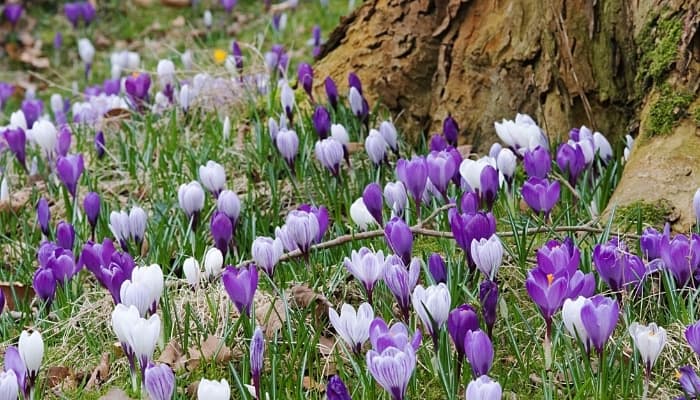
Crocus is a small flowering ground cover that blooms in the late winter with varying shades of pinks, reds, oranges, yellows, purples, and blues. Its corms will naturalize in the soil and regrow each season.
- Key features: Prefers partial to full sun, early blooming, deer and rabbit resistant
- Average size: 2 to 4 inches tall and spread as wide as they can.
- Best for Grow Zones: 3 through 8
- Annual or perennial: Perennial
13. Daphne
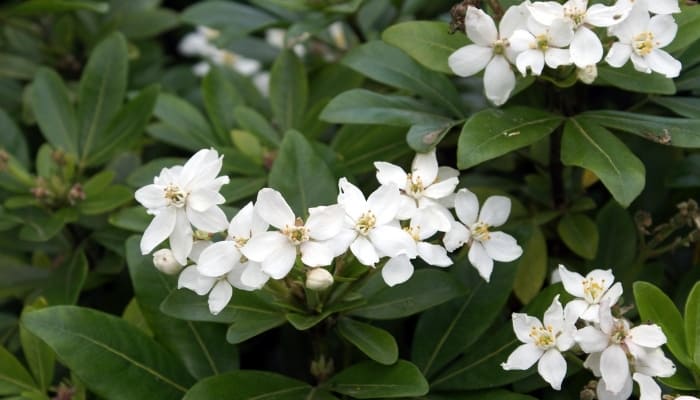
Globe-shaped florets of white, yellow, or light-pink flowers bloom in early winter or spring on this small shrub. It is evergreen in warm climates but deciduous in cooler climates.
- Key features: Prefers sun or limited shade, early blooming, neat growth habit
- Average size: 2 to 5 feet tall and 2 to 6 feet wide
- Best for Grow Zones: 4 through 9
- Annual or perennial: Perennial
14. Astilbe
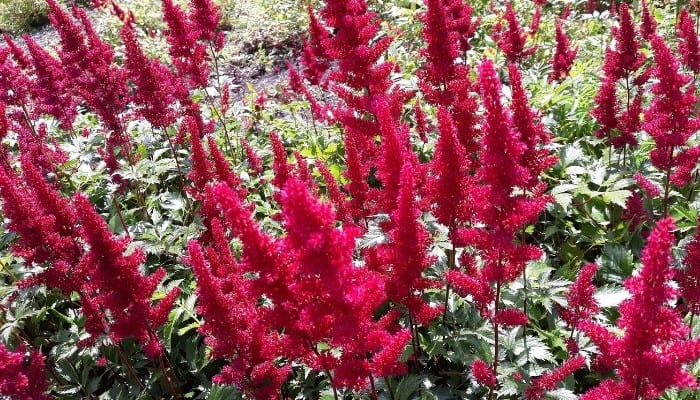
Known as false goat’s beard, astilbe will flower in the late spring with white or purple spikes of flowers that rise above or arch over the fern-like foliage.
- Key features: Shade tolerant, unique flowers
- Average size: 1 to 3 feet tall and 2 to 3 feet wide
- Best for Grow Zones: 3 through 9
- Annual or perennial: Perennial
15. Photinia

This broadleaf evergreen shrub has bright-red young growth that is accompanied by creme-colored flowers in the spring. Unfortunately, this flower’s fragrance is known to be less than desirable.
- Key features: Prefers full or partial sun, colorful young growth, strong fragrance
- Average size: 10 to 15 feet tall and wide
- Best for Grow Zones: 7 through 9
- Annual or perennial: Perennial
16. Iris
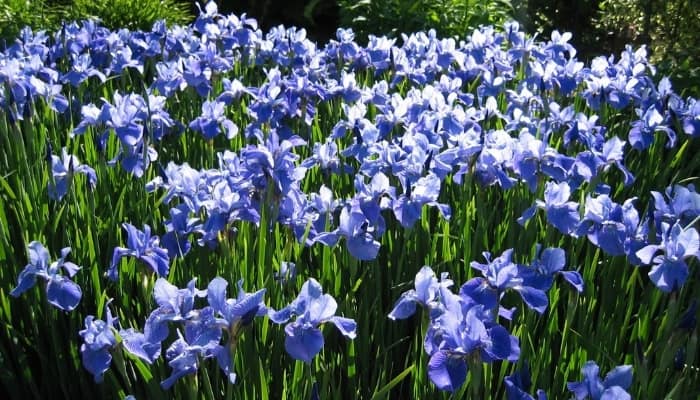
With their intricate blooms that range in color from blue, purple, yellow, orange, white, and burgundy, iris plants cover the full spectrum!
Their bulbs or rhizomes continue to regrow seasonally and require full sun exposure to flower abundantly, so plant them on the outer edges of the shade cast by the oak tree.
- Key features: Prefers full sun, numerous colors
- Average size: 1 to 4 feet tall and 1 to 2 feet wide
- Best for Grow Zones: 3 through 9
- Annual or perennial: Perennial
17. Jasmine

Jasmine is a creeping vine or shrub that gives off an amazing fragrance when blooming in the spring and summer. Jasmine is sure to dazzle with its white, pink, or yellow flowers and accompanying scent!
- Key features: Prefers full or partial sun, strong fragrance, fast growing
- Average size: 4 to 15 feet tall and 7 to 10 feet wide
- Best for Grow Zones: 7 through 10
- Annual or perennial: Perennial
18. Pieris

Pieris is a slow-growing evergreen shrub that flowers in the late winter and early spring with hanging clusters of white or pale pink flowers.
- Key features: Prefers full or partial sun, unique flowers, heavy blooming
- Average size: 9 to 12 feet tall and 6 to 8 feet wide
- Best for Grow Zones: 4 through 8
- Annual or perennial: Perennial
19. Rhododendron
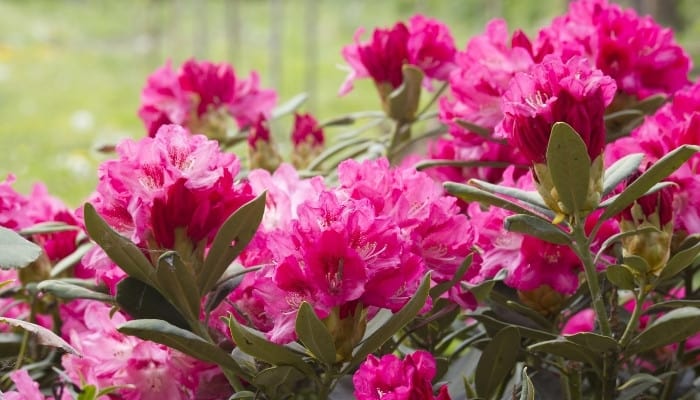
Related to azaleas, rhododendrons also flower with large blooms of pink, purple, red, white, and yellow flowers in the spring and continue throughout the fall.
- Key features: Prefers partial sun, heavy blooming, long-lasting blooms
- Average size: 1 to 3 feet tall
- Best for Grow Zones: 3 through 9
- Annual or perennial: Perennial
20. English Ivy
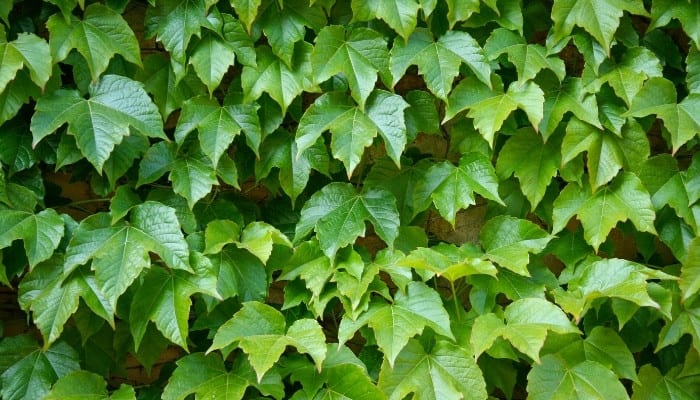
Thriving almost anywhere and overtaking areas quickly, this evergreen ground cover doesn’t require much maintenance other than keeping it contained from growing in unwanted areas.
- Key features: Prefers shade, fast growing, low maintenance
- Average size: 1 foot tall but will grow far and wide as it can
- Best for Grow Zones: 4 through 13
- Annual or perennial: Perennial
Closing Thoughts
Utilizing the area under your oak tree is a great way to add more color, depth, and diversity to your landscape.
Now that you’ve seen some great varieties to plant, take a moment to think about all you can do with the understory of your landscaping!

